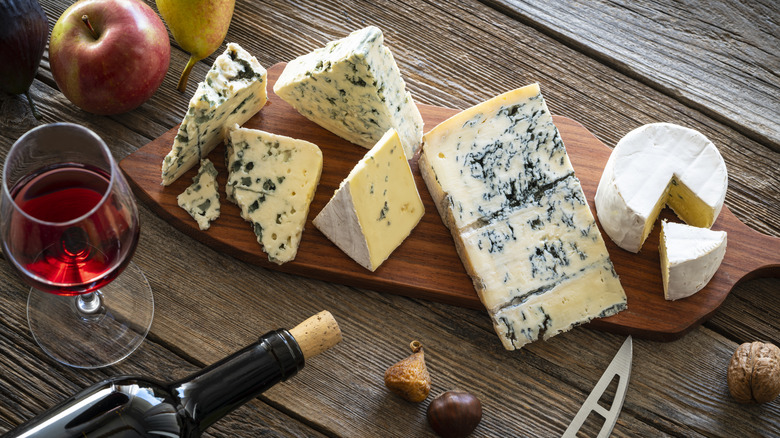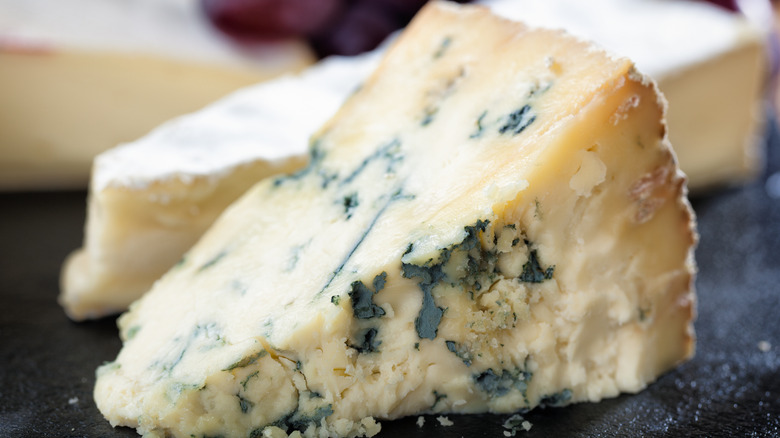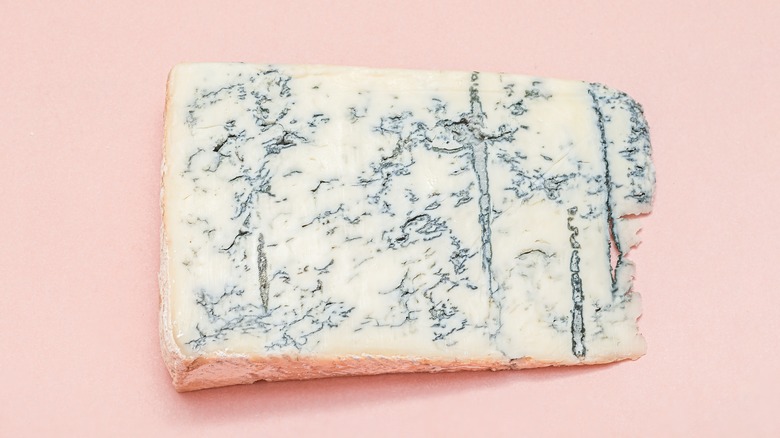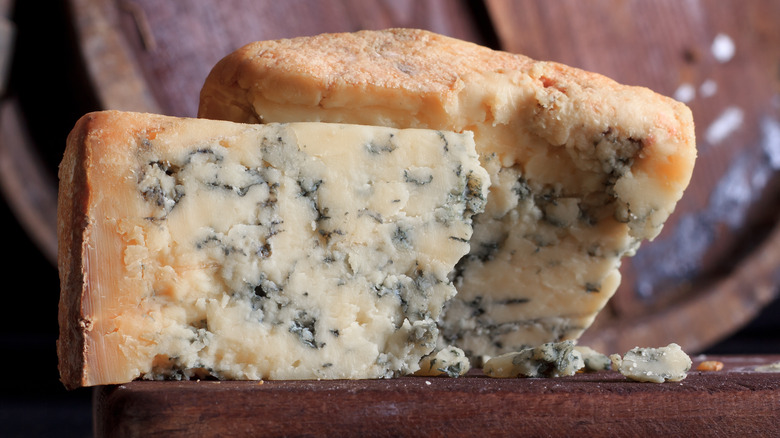Blue Cheese Vs. Gorgonzola: What's The Difference?
The range of cheese is impressive — from hard and salty parmesan to a pot of delicious gooey fondue. Yet few varieties polarize tastes quite like funky blue cheeses. Filled with mold spores, which lend them their distinct coloration, such varieties are defined by their sharp taste and pungent smell. Most renditions are crafted from cow's milk and necessitate a few months to ripen. However, aside from such generalized characteristics, there's a whole lot of versatility in the style. In fact, even categorizing what's considered blue cheese can be complicated.
Turns out, many noted cheeses are part of the blue umbrella, such as Stilton, Roquefort, and gorgonzola. So, let's focus on the latter — how does the beloved gorgonzola compare to other blue cheeses? Examining such differences reveals Gorgonzola's uniquely Italian qualities, all the while showcasing the breadth of blue cheeses. So grab your cheese knife, and let's dive into the details.
What is blue cheese?
Blue cheese is an encompassing term that includes any cheese purposefully molded with strains of penicillin. Although oftentimes crafted with cow's milk, cheesemakers can also reach for a sheep's and goat's milk base to achieve the pungent result. After a preparation process equivalent to other cheese types — with a curd and whey separation procedure — the penicillin mold is introduced, with indentations for air circulation. To allow for the mold to proliferate, blue cheese is aged for several months.
Resultant cheeses range in texture from creamy to crumbly, with many flavors, but typically a palate that leans to the salty and sharp side. French Roquefort — one of the oldest varieties — is one of the most intensely aromatic renditions, with a complex, flavorful character. Conversely, blue cheese, like Denmark's Danablu offers a more muted, creamy take on the style. Especially when utilizing blue cheese in culinary applications, such as a delicious sauce for a filet mignon, make sure to purchase the correct style for the task. While none disappoint in flavor, all offer distinctive characters.
What is gorgonzola?
Gorgonzola is a style of milk-based blue cheese that hails specifically from several provinces in Northern Italy. Its creation is regulated by a protected designation of origin label, achieved through attaining several factors. There's a precise temperature range during the production stages, time limitations for the seasoning and maturing, as well as a defined rind and shape.
Despite confinement to such ancestral methods, gorgonzola comes in a variety of textures and flavors. Less-aged variants have a creamier consistency with a milder corresponding flavor and tangier character. Meanwhile, older gorgonzolas have a bold, sharp, and more flavorful character that crumbles once cut. With prolonged maturation, gorgonzola gains pungency.
The cheese's production is a source of Italian pride, with origins alluding to the tenth century. Despite only a few hundred producers noted in the appellation, large volumes of the cheese are exported to neighboring European countries and elsewhere abroad. As a result, the delicious, complex, and accessible food has become an emblematic example of blue cheese.
Gorgonzola is a Northern Italian rendition of blue cheese
Since gorgonzola is a regionally-specific variant of blue cheese, it shares many attributes with other molded cheeses. However, it boasts several characteristics completely distinct from other renditions. Firstly, the mold marbling is specifically a green-blue color, unlike other cheeses, which can contain more shades of grey and darker blue. Additionally, the darker coloration runs throughout the cheese in spurts rather than having a spotted pattern. As a result, gorgonzola is easier to recognize when a cheese block is sliced open.
With so much variance in cheese flavor, the precise taste depends on the gorgonzola producer. Typically, the cheese leans less intensely pungent than other types, especially in comparison to Roquefort. The unique Italian unskimmed milk utilized during its production lends it a character irreplicable in other cheese types. Such a complex origin process makes it an especially delicious rendition; there's no blue cheese with a flavor and mouthfeel combination quite like gorgonzola.



